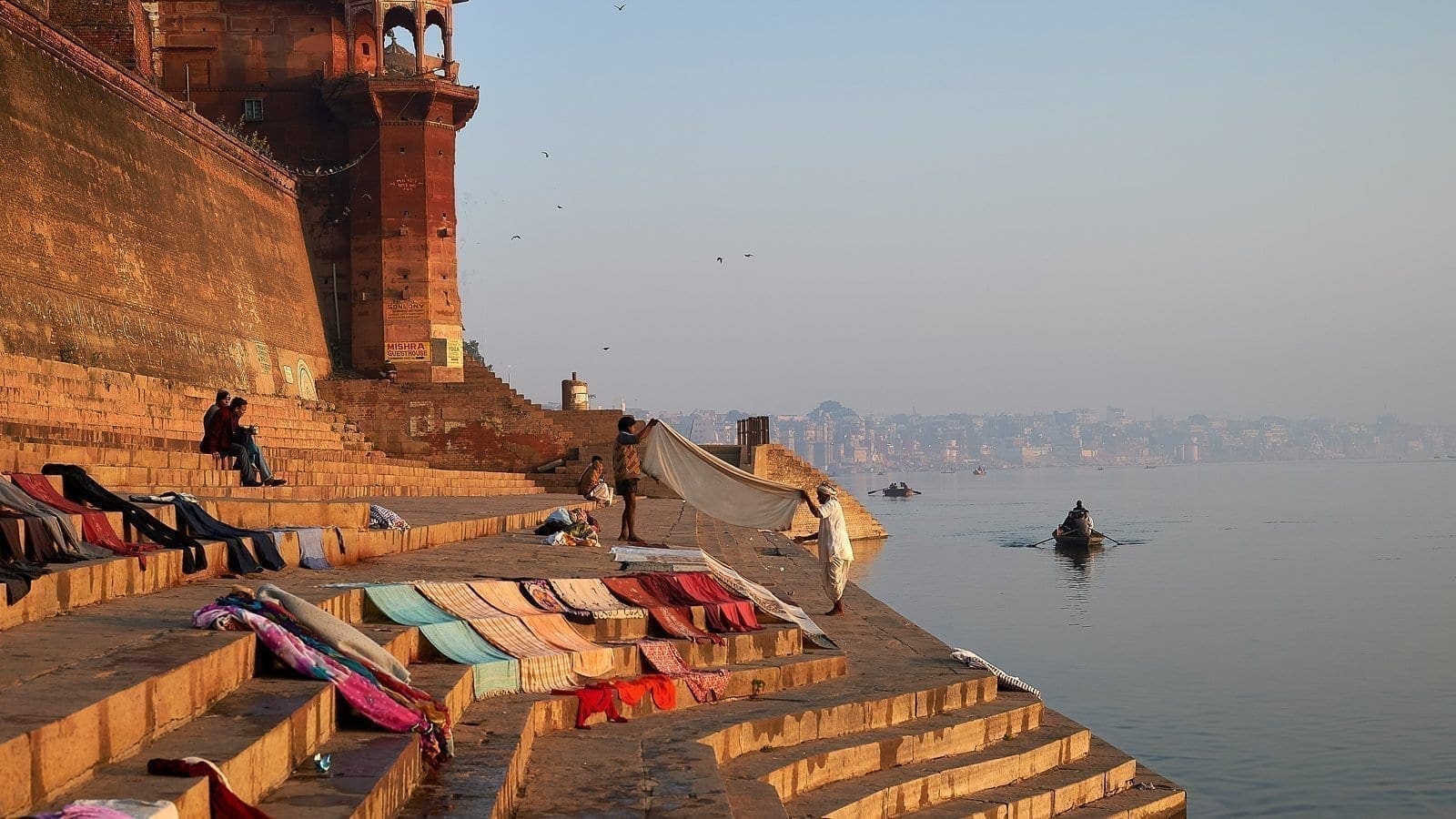Varanasi lies on the left bank of the Ganges. The right is considered impure and is left to nature. In Varanasi, there are innumerable ghats, or stairways leading to the waters of the Ganges. Of these, most are used for ablutions, puja, purifying baths, and washing of covers and cloths; while two are dedicated exclusively to the rite of cremation.
The ritual of cremation in Hinduism is very important. A Hindu considers the body only as a shell that transports the soul from one reincarnation to another. When the journey is over, this is no longer needed and is burnt on flaming pyres, only to be abandoned in the arms of the Ganges, in a process of perpetual regeneration.
In Varanasi, this ritual never stops: pyres burn day and night, incessantly. The Manikarnika Ghat is the main ghat dedicated to this sacred ritual. Here we find the doms, the untouchables, considered – only in Varanasi – the attendants of Shiva. It is they who are in charge of cremation, and also controlling the turnover associated with this practice.
The culmination of the ceremony is the liberation of the soul of the deceased: when the body is now incinerated, the eldest male child (the same one who set fire to the pyre) breaks the skull of the deceased with a stick, at the level of the third eye, to allow the soul to leave the shell of this life.
The main ghat in the city is the Dashashwamedha Ghat. It is the ghat of the ten ashwamed or ten sacrificed horses, a ritual that the kings of the Vedic period performed to ensure male heirs worthy of reigning. Every day, when the sun sets, the Aarti Puja takes place here: for 45 minutes the Brahmans sing hymns to Mother Ganga, brandishing the sacred fire and offering flowers to the river as a sign of devotion.
The Dhobi Ghat is the ghat of the washermen. On this flight of steps, one can witness the incessant work of the dhobi, the washermen, who beat brightly coloured saris and dhoti on the stone and then hang them out to dry on the steps and the ghat wall.


